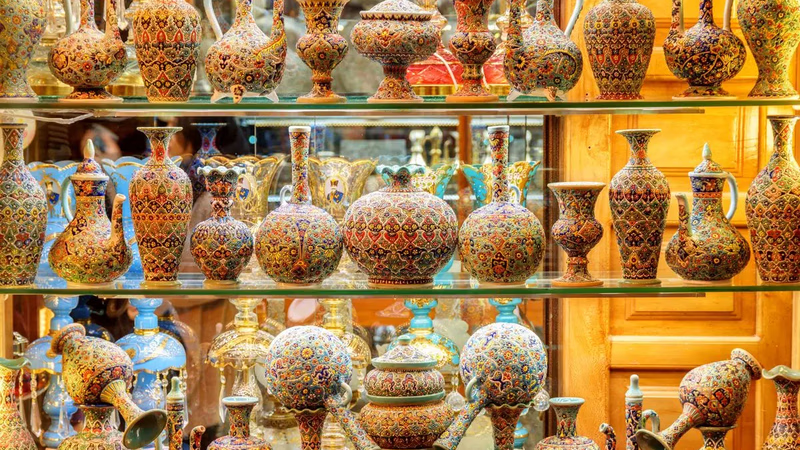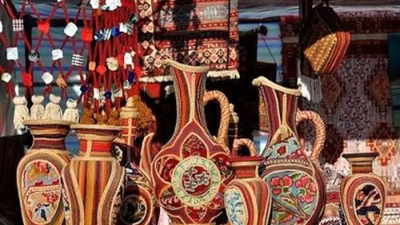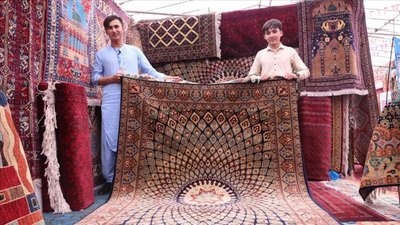
Modern handicrafts showcase innovative designs using advanced technologies.
Modern handicrafts refers to industries that design, produce and sell handmade products using new technologies and advanced technologies. These handicrafts are simultaneously inspired by the principles and techniques of traditional handicrafts and use modern techniques and tools to improve quality, improve processes and increase productivity. Modern crafts have a strong focus on design and creativity. The design of handmade products in these industries is done in a modern and up-to-date manner in order to be in sync with the tastes and needs of customers.
Modern craftspeople target and market their products to target customers using modern marketing methods, including online advertising, online stores, and social media. As a combination of tradition and technology, modern handicrafts are also effective in attracting new and younger customers and help the development of handicraft industries. On the other hand, by preserving and strengthening the cultural and industrial identity of a region or country, these industries can contribute to the economic and social development of that region. In the world of handicrafts, there are always new innovations and creations. Below are some examples of modern and new handicrafts that have been recently invented:
- With the advancement of 3D printing technology, this technique allows the production of unique and modern jewelry. Designers can implement more creative designs using this technology.
- Using nanostructure technology and various coatings, nano fabrics add features such as waterproof, antibacterial, stain-resistant and high resistance to fabrics. These fabrics are used to make clothes and various other products.
- Laser cutting and engraving technology allows the production of wooden artifacts with modern designs and patterns. This technique allows designers to create detailed and artistic designs on wood .
- 3D printing is also used in the ceramic industry. Using this technology, ceramic dishes with more complex and creative designs and structures can be produced.
- Today, 3D printers are used in the production of decorative items such as statues, lamps, interior decoration items and more. This technology allows designers to produce their unique works of art with high precision and in a shorter time.
- With the advancement of electronic technology, handicraft industry has also adapted. Today, one can find electronic accessories such as handbags compatible with tablets, mobile phones and other electronic devices. These handmade accessories are usually made using materials like leather, fabric and wood.
- Connecting technology to the textile industry has led to the production of smart textile products. These products include smart fabrics with features such as thermal sensors, pressure sensors, high quality and antibacterial fibers and lighting. These fabrics can be used in various industries, including fashion and clothing, sports equipment production and household appliances.
- Creativity in the building decoration industry has also led to the creation of new products. Examples of these industries include 3D tiles, smart wall posters with various patterns and motifs, beautiful windows and doors with special decorations and smart lighting in the building.
- With the advancement of technology and technology, cosmetics have also come up with new innovations. Examples of these industries include electric and smart brushes, smart skin cleaning devices, and cover masks with advanced technologies and natural materials.
Smart technology has also had a significant impact on the interior decoration industry. Today, you can see smart interior decoration products that are made using new technologies such as the Internet of Things (IoT), sensors, smart control systems, and smart lighting. These products include smart lights that can be controlled by voice and touch, smart window coverings that adapt to the temperature and ambient light control, smart thermostats that adjust the temperature automatically, and smart audio systems that use artificial intelligence and advanced communication networks. Recognizes voice commands.
Modern crafts use new technologies such as personal computers, design software, assembly machines, and other electronic and mechanical tools to produce and improve production processes. Modern crafts preserve traditional values, processes and techniques and use them in the design and production of their products. This connection with tradition plays an important role in creating additional value for handmade products. Modern handicrafts usually pay a lot of attention to environmental issues and focus on production processes and use of materials without damaging the environment and sustainable methods.
-

Middle Eastern handicrafts, renowned for their beauty and artistry, play a significant role in global trade. Countries like Iran, Turkey, Egypt, and Lebanon are key exporters of these crafts, which include carpet weaving, pottery, jewelry making, textiles, metalworking, and wood industries. The unique designs often reflect the region"s rich history and culture, featuring geometric patterns and local materials. Handicrafts not only attract international buyers but also enhance tourism as visitors seek authentic local products. Media promotion is crucial in expanding market reach for these crafts. Events and exhibitions provide platforms for artisans to showcase their work globally. The cultural significance of these handicrafts fosters better understanding and appreciation of Middle Eastern art worldwide while contributing to local economies. "
-

Handicrafts encompass the creation of products using manual skills and various materials, including wood, leather, fabric, and metal. These industries have deep cultural roots and often reflect the traditions and histories of their respective societies. Handicrafts serve not only as artistic expressions but also play a vital role in local economies by generating employment and promoting tourism. The craftsmanship involved in creating items such as carpets, pottery, jewelry, and textiles showcases the creativity and technical skills of artisans. Each piece often carries cultural significance, with designs inspired by local narratives, rituals, and even religious symbols. This connection to culture is essential as it preserves heritage while fostering regional identity. The intricate details and unique combinations of materials in handicrafts highlight their artistic value. As a result, handicrafts are not merely products but representations of cultural stories that contribute to the social fabric of communities.
-

Handicraft producers significantly influence the supply market by creating handmade art products that cater to diverse consumer preferences. The variety, quality, and design of these products are crucial in shaping demand. Factors such as marketing strategies, distribution channels, and effective customer communication also play vital roles in promoting handicrafts. Global demand is affected by consumer tastes, purchasing power, and experiences with product quality and artistic value. Additionally, government policies and international trade agreements impact production and trade dynamics in the handicraft sector. Key players in the global handicraft market include China, India, Thailand, Mexico, Morocco, and Iran as major producers. Conversely, the United States, European Union countries, Japan, Australia, and Canada are significant consumers of handicrafts. Cultural heritage influences demand patterns as tourists often seek unique handmade items as souvenirs. Understanding these dynamics among producers, marketers, customers, and regulatory frameworks is essential for enhancing the handicraft supply chain.
-

Modern handicrafts integrate traditional techniques with advanced technologies to enhance quality and productivity. This sector emphasizes design and creativity, appealing to contemporary consumer tastes. Innovations such as 3D printing, nanostructure technology, and laser cutting have revolutionized product offerings, enabling the creation of unique jewelry, smart textiles, and intricate wooden artifacts. The use of electronic technology has led to the development of accessories compatible with modern devices, while smart textiles incorporate features like thermal sensors and antibacterial properties. Additionally, advancements in building decoration have introduced products like 3D tiles and smart lighting systems. These innovations not only attract younger customers but also contribute to the economic growth of regions by preserving cultural identities. Modern craftspeople leverage online marketing strategies to reach target audiences effectively. By focusing on sustainable practices and environmental considerations, this industry aims to balance tradition with modernity.
-

Handicraft exports play a vital role in international trade, symbolizing the art and culture of various regions. These products, including carpets, jewelry, and pottery, are highly sought after globally due to their unique artistic value. The increasing desire for handmade items has bolstered the export market, particularly in regions with cultural ties to these crafts. Media exposure significantly influences demand; when handicrafts gain attention from authoritative sources, interest surges. Additionally, tourism drives demand as visitors seek authentic local products. Economic factors such as purchasing power also impact the market for high-value handicrafts. In recent years, consumers have shown a preference for socially responsible and environmentally sustainable products, further shaping demand trends. Governments and organizations are actively supporting the handicraft sector through initiatives aimed at enhancing quality and facilitating exports via international trade agreements.
This sector not only contributes to economic development and job creation but also preserves local culture and art forms. Understanding the interplay of cultural, economic, and social factors is crucial for boosting handicraft exports and meeting market demands effectively.





